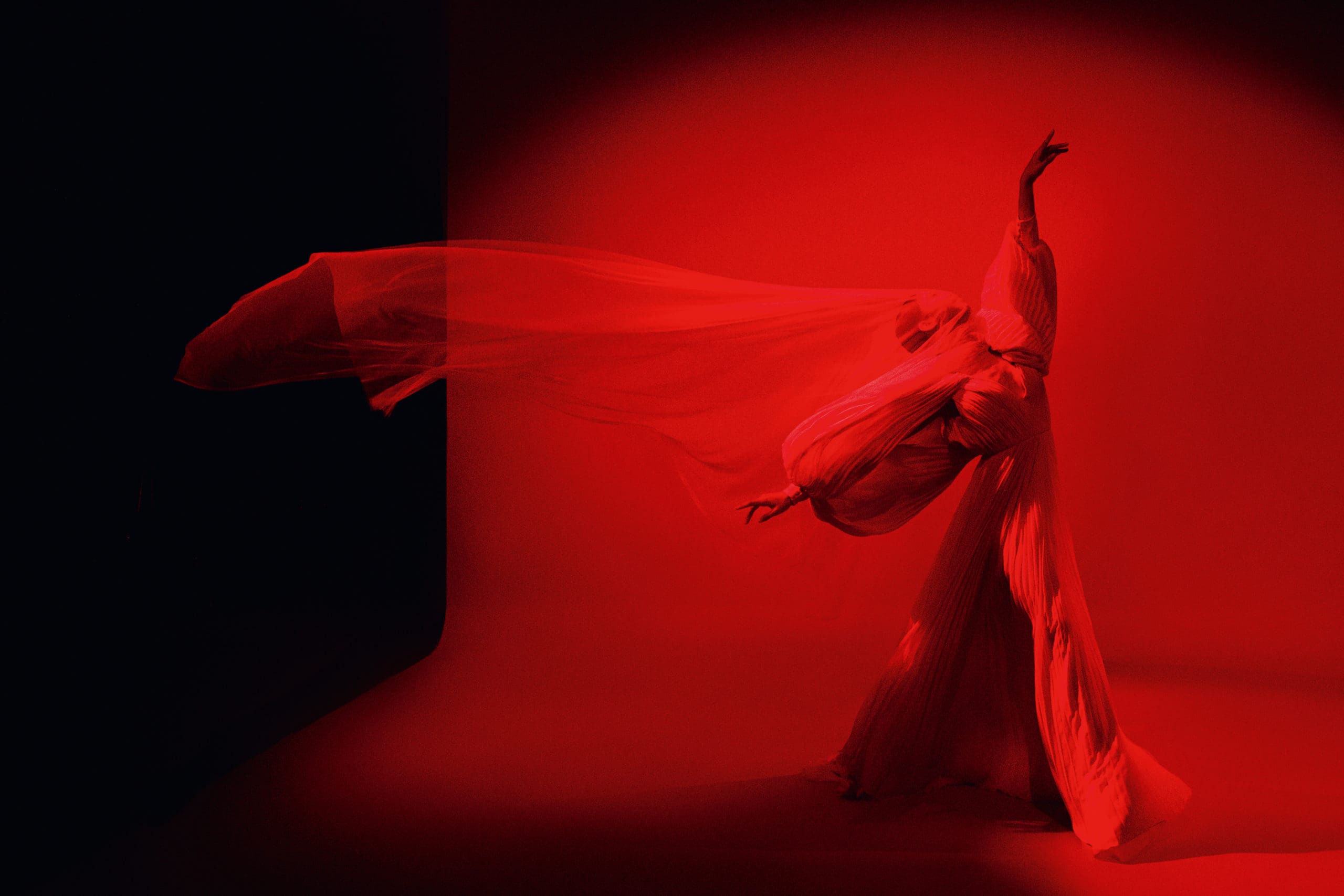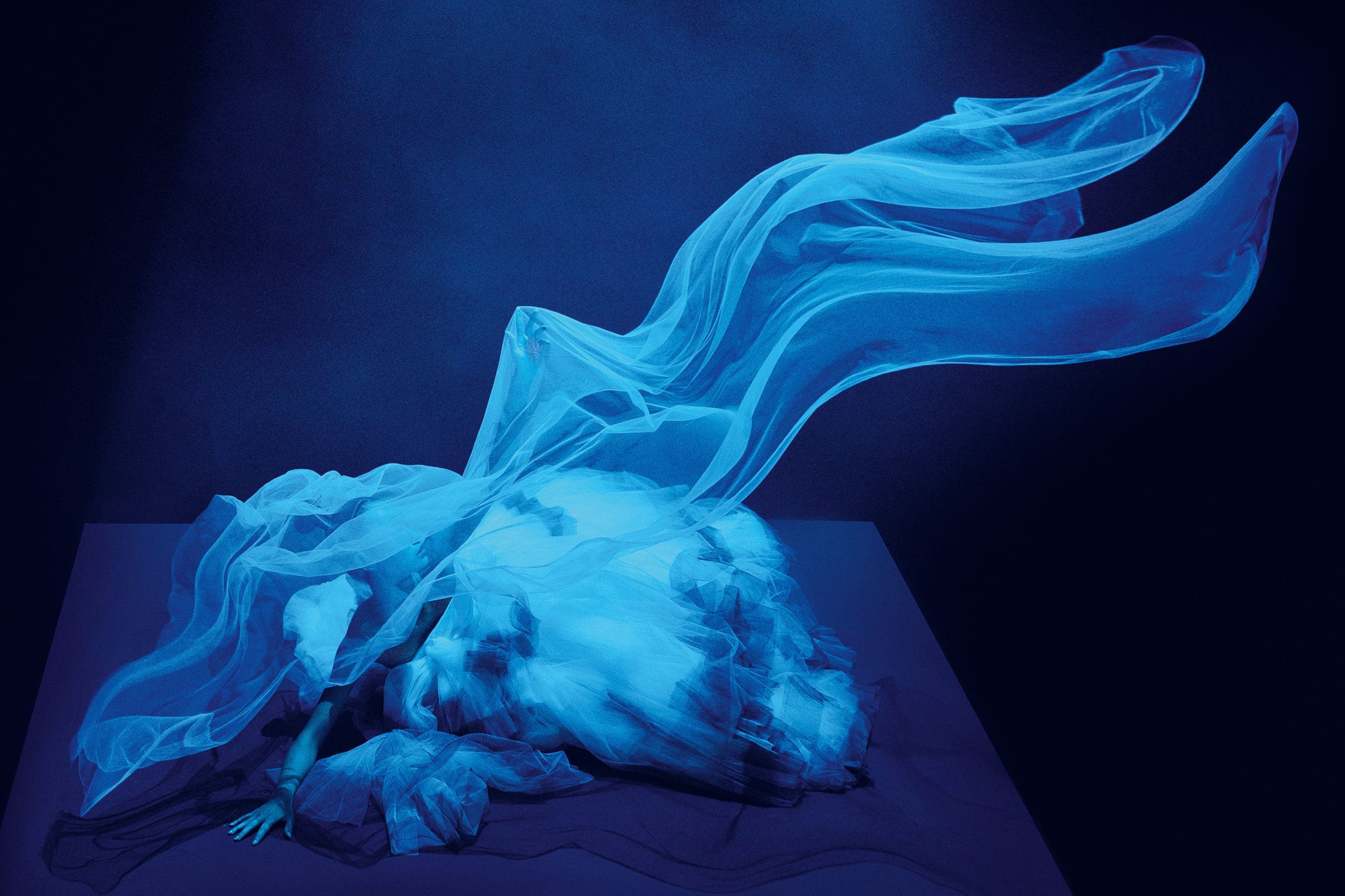There is a journey to the elusive calm state of mind, that which travels different realms to reach a point of release. Here, we tell its story through the poetry of dance with fantastical tulle frocks, painterly dresses, and the most ethereal light-as-air pieces.
Hiking up a mountain last year, winded and worried, my mind had started to enter the quit zone. I was counting my final steps. A friend, paces ahead of me, heard my laborious panting. He turned around and said, try this way of breathing, and demonstrated a rhythmic pattern of inhaling and exhaling. Aware now of how to control my suspiration, my breath found its flow, until I found myself at the summit.

Breathing is an act we take for granted, but literally, it gives us life. Practiced correctly, breathing can give us the lightness to ascend a mountain and the calm to make it through a storm. When we say we can “breathe easy,” we have a sense of unburdened wellbeing—ginhawa—that is only attained when our mind, body and spirit are aligned.
As a Filipino concept, ginhawa commonly refers to ease and prosperity, e.g. “sa hirap at ginhawa,” but its roots go deeper than material comfort. In Visayan, the word means breath or life. “Ginhawa is synonymous with life itself,” wrote Leonardo Mercado, the pioneering scholar of Filipino philosophy. “When the ginhawa is cut, so is life.” Believed to be located in the abdominal area, ginhawa is linked to the Indian and Chinese beliefs of prana and chi, similar life force energies that flow through our bodies, regulate our health and well-being, and connect us to a higher power.

Ginhawa offers a holistic view of the person, and this is where it differs from many Western philosophical models. When one suffers from illness or trauma, we seek healing of the whole person, integrating their physical, social, emotional, and spiritual aspects in harmony. Ginhawa goes further than the self and individual; it is a force that necessarily connects us to others. As the historian Xiao Chua explained, “There is no ginhawa without goodness.” This means that one cannot have ginhawa without the kaluluwa being in its right place. Kaluluwa is the life force found in our brain, and what we may think of as the soul. A person whose kaluluwa is aligned (in heaven) has ginhawa, and those who have ginhawa manifest it through pakikipagkapwa, or seeing the self in the other. Kapwa denotes a deep empathy with our neighbors, our community, and with nature, because nature is also believed to possess spirit.
We return to these indigenous ideas and ideals. Perhaps not only to decolonize wellness and self-care, but to find new-old ways to connect with ourselves, our community, and our environment. In these times and throughout the pandemic, we realize how our breath affects and binds us all from a personal to a global level, and discover how we still yield to the search for that bearable lightness of well-being.

Photographer: Koji Arboleda, Lighting Designer: John Batalla, Fashion Director: Pam Quiñones, Makeup Artist: Janell Capuchino, Hairstylist: Mong Amado, Nails: Extraordinail, Models: Ica Dy, Maisie Briones, and Paloma Laforteza, Producer: Anz Hizon, Fashion Associate: Renee De Guzman, Assistant Photographer: Gab Villareal, Assistant Lighting Designer: Anthony Opeda, Lighting & Technical Team: Raymund Denaga, Jomar Trinilla, Marvin Jalbuena, Jovy Delantar, Genesis Berry, and Ronald Gutierrez, Production Design Team: Miguel Alomajan, Rey John Legaspi, CJ Garcia, Jheno Sonio, Kenneth Vence Murillo, Miguel Timbol, and Ernesto Legtan of Rocket Designs
